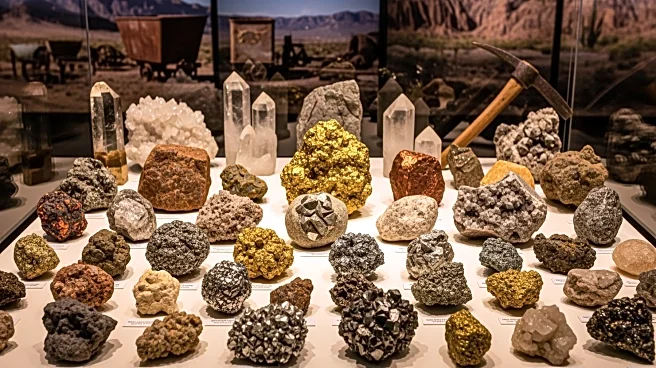What's Happening?
Talon Metals Corp. has announced significant findings at its Tamarack Nickel-Copper-Cobalt Project in Minnesota. The company has identified potential for repeated massive sulphide accumulations extending over 300 meters below the deepest intercept in the Vault
Zone. This discovery is based on new borehole electromagnetic data and drilling results, which have defined a pattern of multiple accumulations of massive sulphides. Talon Metals has successfully transitioned its exploration team from Michigan to Tamarack, enabling an expanded three-rig drilling campaign. The company reported complete assay results from drill hole 25TK0563, which represents the highest nickel-equivalent grade multiplied by length interval in the project's history.
Why It's Important?
The discovery of massive sulphide accumulations at the Tamarack Project is significant for the U.S. mining industry, particularly in the context of nickel and copper production. These metals are crucial for various industries, including electronics and renewable energy. The findings could enhance the project's economic viability and attract further investment. Talon Metals' expanded drilling campaign may accelerate resource delineation, potentially increasing the project's output and contributing to the U.S. supply chain for critical minerals. This development could also impact local economies in Minnesota, providing job opportunities and boosting regional economic growth.
What's Next?
Talon Metals plans to continue its three-rig drilling campaign during the Fall 2025 and Winter 2026 seasons. The company aims to determine the lateral extent of massive sulphide stacks and explore the opposite side of the intrusion for additional mineralization. The exploration team will refine drill targets based on ongoing geological and geophysical insights. Success in these efforts could lead to further discoveries and expansion of the Tamarack Project, potentially increasing its contribution to the U.S. critical minerals supply chain.
Beyond the Headlines
The findings at the Tamarack Project highlight the importance of advanced geophysical techniques in mineral exploration. The use of borehole electromagnetic surveys has proven effective in identifying subsurface mineralization, which could influence future exploration strategies in the industry. Additionally, the discovery of unique geological processes, such as hypogene-style copper enrichment, may offer insights into similar mineral systems elsewhere, potentially guiding exploration efforts beyond the Tamarack Project.














